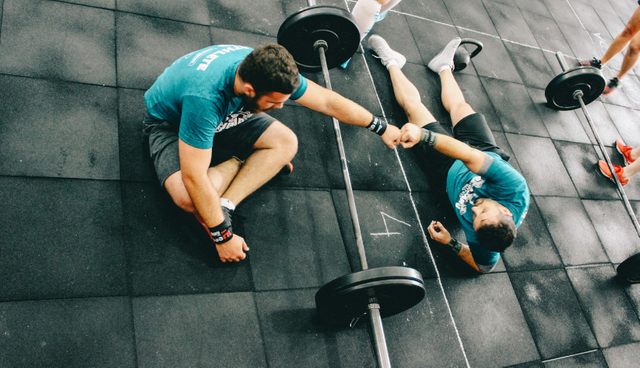
I like to explain a little thing that will help people maintain a good health, specially for those who workout in order to be in shape, and have a good physical and mental condition.
Now, a recovery week is a planned period in your active rest and recovery training. Although the body is an almost perfect adaptation machine, there are times when it is necessary to take a breath so that we can recover in a more complete way.
When resting from training we have two main options:
- Take a full break:
This means not doing any type of weight training for a certain period of time which is usually one or two weeks. This type of rest is recommended in situations of severe over-training or injuries.
- Resting actively with a period:
In this type of rest we do not stop training, but we reduce the intensity, volume or frequency of the workouts.
The most common reasons to include a week are:
- Muscular Recovery:
- Joints
- Tendons
- Neuronal Recovery (SNC)
- Force
- Reduces the risk of injuries
- You break the stalemate
- Increase your progress
- You'll feel better
- It is necessary to continue progressing
- It helps to develop more muscles in the following weeks

A newbie will require light training (less frequency of weeks regarding to intensive workout), while an advanced one may require it every 4 weeks (3 of training 1 of light training). It is recommended to perform it every 8 or 12 weeks based on muscle volume routines. For strength routines planning this recovery process is much more personal and with many more factors to consider.
How to perform the download week
During the light training week, you must reduce the volume of training (number of series and repetitions) as well as the weight used, between 20% and 50%.
In addition, it is important not to perform exercises that overload the central nervous system (CNS), to ensure your complete recovery.
To know which exercises punish the central nervous system less, we can base ourselves on the Christian Thibaudeau Neuromuscular Activation Scale.
Examples of the routine:
Example 1:
Do not perform basic exercises such as squat or deadlift, perform light exercises for your central nervous system, such as leg extensions or pulley pulls.
Monday: Full-Body (1 exercise of 3 series per muscle group)
Wednesday: Full-Body (1 exercise of 3 series per muscle group)
Friday: Full-body (1 exercise of 3 series per muscle group).
Example 2:
As in the previous example, perform mild exercises for your central nervous system. Do not get to muscle failure in any series, for failure-1 repetition.
Monday: Routine A (Chest-Shoulder-Triceps-Quadriceps) 2 exercises per muscle group of 3 series.
Tuesday: Routine B (Back-Biceps-Femoral) 2 exercises per muscle group of 3 series.
Thursday: Routine A (Chest-Shoulder-Triceps-Quadriceps) 2 exercises per muscle group of 3 series.
Friday: Routine B (Back-Biceps-Femoral) 2 exercises per muscle group of 3 series.
Example 3:
Keep doing your current routine (for example, if you are doing the gymnastic routine), decreasing the number of series by 50% but maintaining the same kg. However, if you feel the CNS (central nervous system) exhausted you can reduce the kg up to 20%.
Monday: Routine A
Tuesday: Routine B
Thursday: Routine C
Friday: Routine D
Example 4:
Get out of the gym. This is especially useful if you feel that your mind needs to disconnect from the gym environment.
You will do sport but outside the weight room. This week is a great time for running, swimming, cycling, tennis, etc. You can also use that dumbbell game that you almost never use to perform a few days of light exercise.

Final considerations
Finally I would like to emphasize that I am aware that there is a disproportionate fear in some people to stop training (or train less intensely) for a week or a period of more days.
These people put their hands to their heads thinking "NOOO, I'M GOING TO LOSE A CENTIMETER BICEPTS " or "I'LL LOSE STRENGTH".
For many years, I myself was like that until finally I decided to plan recovery weeks in my workouts. I would like to convey to these people that they should not worry or become so obsessed, muscle gains and strength are not so easily lost, and a recovery week will give them greater muscle development and strength when they return to train at a maximum intensity as if they had not performed the recovery week.
You do not have to wait to feel bad to include this recovery week. Ideally, take it before you feel worn out. Finally, maintaining the diet and a good diet is ESSENTIAL during this week.

Image: Source
You can follow me on:
Instagram @eudinevies


Congratulations @eudinfitness! You have completed the following achievement on the Steem blockchain and have been rewarded with new badge(s) :
Click on the badge to view your Board of Honor.
If you no longer want to receive notifications, reply to this comment with the word
STOPDo not miss the last post from @steemitboard:
Downvoting a post can decrease pending rewards and make it less visible. Common reasons:
Submit